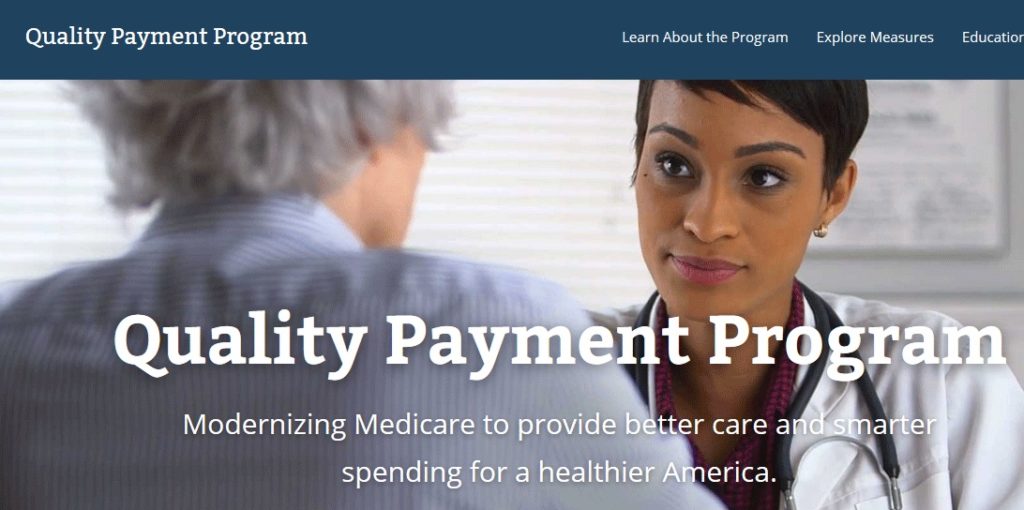March 8, 2017
Many ODs have heard of MACRA and MIPS, but just as many may be confused as to what these acronyms mean, and what they mean to the business of running their practice.
What is it?
MACRA is the Medicare Access & CHIP Reauthorization Act. It establishes a new incentive payment program called the Merit-Based Incentive-Based Payment System (MIPS), which creates a scoring system to compare the quality and cost of care given by providers.
MACRA and MIPS are an attempt to fundamentally change the way doctors get paid to deliver health care. The goal is to move away from a fee-for-service model to a model where quality and value, rather than volume, are emphasized.
MACRA is the piece of legislation that created the Quality Payment Program (QPP). The QPP shifts the fundamentals of reimbursements for Medicare Part B services from volume-based (the more services you provide, the more you’re paid) to value-based (higher quality/lower cost is rewarded).
Financially, what’s at stake?
A clinician stands to have their reimbursements revised upward as much as 4 percent ($400 per $10,000 of Part B revenue) in 2019. Conversely, a clinician who doesn’t show even a slight attempt at participation this year would see an automatic 4 percent downward adjustment in 2019. These values will quickly scale up +/- 9 percent by 2022.
Additionally, CMS has set aside $500 million for each year between 2019 and 2024 to reward those who perform exceptionally well. Those “bonuses” range from 0.5-10 percent depending on how the clinician’s final score compares to an “additional performance threshold.”
Thus, the potential exists for a 2019 reimbursement revision from 4 percent downward for those who don’t participate to 14 percent upward for those who participate and perform exceptionally well.
What do I have to do?
ODs need to understand how their costs and quality will be “graded” to understand the impact on how they are paid for Medicare Part B services. Additionally, similar value-based principles are being applied by third parties outside of Medicare, so the sooner ODs get comfortable with the ideas, the better-positioned they’ll be for the future.
The QPP final rule was very clear in predicting that 90 percent of all eligible clinicians would be subjected to MIPS participation in 2017 (vs. 10 percent in the advanced alternative payment model arm). Things get even more imbalanced when looking just at ODs where 99.9 percent of eligible ODs would be impacted by MIPS. If 99.9 percent of eligible ODs will be in the MIPS arm of the QPP, and MIPS is how modifications in Medicare Part B reimbursements will take place moving ahead, it’s critical that ODs understand how they’ll be evaluated, and how they can turn its perceived barriers into opportunities.
Additionally, MIPS performance is required to be posted on Physician Compare, so ODs shouldn’t lose sight of the fact that the information is out there for public consumption.
ODs who have participated in the legacy programs of Meaningful Use and PQRS have a head start in that they’re already familiar with fundamental concepts the revised versions of these programs within MIPS (named Advancing Care Information and Quality, respectively) build on.
However, MIPS changes these programs from the pass/fail status that they used to be to one where how a clinician performs now matters. A clinician who scores better than the average of all others stands to receive a better reimbursement two years later. The practices that understand this and work toward not only participating, but also excelling, will be the ones best-positioned for success.
Action Plan
DETERMINE ELIGIBILITY. Individual clinicians newly eligible to provide Medicare Part B services in 2017 would be excluded from 2017 reporting requirements, as would those who billed less than $30,000 in Medicare Part B allowable charges, or saw fewer than 100 Medicare Part B beneficiaries during either of two specific time periods (9/1/15-8/31/16 or 9/1/16-8/31/17). Many ODs will find themselves excluded in 2017, but that should not be used as an excuse not to begin planning to participate. CMS established these exclusionary criteria to give smaller practices and solo clinicians time to adapt prior to required participation.
CONSIDER PERFORMANCE PERIOD LENGTH. MIPS in 2017 affords great flexibility in length of participation time to allow clinicians to ease into the program at their own pace. However, the longer the performance period, the more likely it is to achieve a higher MIPS score, courtesy of how the Quality performance category is scored.
DETERMINE REPORTING MECHANISM(S). Each performance category offers a variety of data submission mechanisms, and a clinician can use a different mechanism for each category. However, there can be performance and efficiency benefits to selecting a common mechanism for all three. For example, does your EHR provide an electronic reporting mechanism for you? If so, one file can be submitted to CMS to satisfy reporting requirements, and, at the same time, entitle the clinician to bonus points in the Quality category. Talk to your EHR vendor about how they can help.
EXPLORE MEASURES IN EACH PERFORMANCE CATEGORY. The Quality Payment Program web site at qpp.cms.gov provides a measure search tool which allows a clinician to see all available measures in each of the three performance categories, and even filter based on reporting mechanism.
PINPOINT ADVANCING CARE INFORMATION MEASURES. Focus on those measures most applicable to your practice. Gone are the days of MU thresholds that need to be exceeded. Instead, MIPS will grade clinicians based on actual performance while at the same time offering a significant degree of flexibility. If a particular measure will be challenging (i.e. “View, Download or Transmit” where clinicians are graded on their patients engaging with their health information via patient portal), points can be made up by focusing efforts on others that might be more relevant and achievable (i.e. “Provide Patient Access” where clinicians are graded based on simply providing online access to patient health information).
SELECT QUALITY MEASURES. Clinicians are required to report six measures, some of which classified as “high priority” offer the potential for bonus points. Identifying the most applicable and beneficial measures ahead of time, and planning how they’ll be accomplished in practice, is key to optimizing the Quality category score. Tip: keep in mind that a measure with less than 20 patients in the denominator will not earn more than the minimum score regardless of how well you do. So, consider measures that pertain to conditions you manage, workflows you follow regularly and reporting period length. The longer the period, and more relevant the measure to your practice, the more likely your actual performance will be considered vs. being assigned the minimum score.
IDENTIFY IMPROVEMENT ACTIVITIES. Identify those activities that can be accomplished through use of certified EHR technology. Given the broad range of activities defined in the final rule, and the concessions provided for small practices, the Improvement Activities category should not prove too challenging in 2017. However, CMS identified 18 specific activities that, if achieved via certified EHR technology, will help the clinician earn 10 bonus points in the Advancing Care Information category. Examples included using a secure messaging system to allow 24/7 access to patients for advice, implementing procedures to close referral loops and participation of bilateral exchange of health information. It makes sense for clinicians to consider adding one of these to their participation.
CONSIDER REGISTRY PARTICIPATION. While not required, active engagement with a qualified clinical data registry like AOA MORE offers a path for electronic submission of Quality category data, bonus points and a host of Improvement Activities options.
 Brett M. Paepke, OD, is the Director of ECP Services for Rev360. To contact him: drbmpaepke@firstvieweyecare.com
Brett M. Paepke, OD, is the Director of ECP Services for Rev360. To contact him: drbmpaepke@firstvieweyecare.com


























